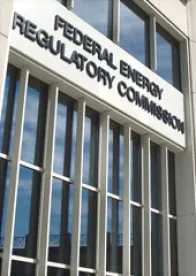At its November 20, 2014 meeting, FERC issued a policy proposal to facilitate the recovery of the costs associated with improving pipeline safety and reducing emissions. Recognizing the fact that several pipeline safety and environmental initiatives will be facing the natural gas industry in the coming months, FERC suggests that pipelines and customers could work together to develop a tracker (e.g., a surcharge on base rates) that recovers those costs associated with pipeline safety and environmental compliance. Because a modernization and safety tracker could be developed faster than establishing a cost recovery mechanism through the traditional rate case process, FERC reasons that pipelines may be incentivized to undertake the upgrades.
The policy proposal describes five basic tenants a pipeline must meet before FERC would approve a modernization tracker. These requirements are as follows:
-
Review of the existing rates. A pipeline’s base rates must have been recently evaluated, either through a general rate case, a collaborative effort with shippers, or potentially a cost and revenue filing.
-
Eligible costs. The eligible costs must be limited to one-time capital costs incurred to modify the pipeline’s existing system to comply with safety or environmental regulations or capital costs shown to be necessary for the safe or efficient operation of the pipeline. The pipeline must identify each capital investment to be recovered by the surcharge.
-
Avoidance of cost shifting. The pipeline must design the surcharge to protect captive customers from bearing cost shifts should the pipeline lose throughput, such as by establishing a billing determinants floor.
-
Periodic review. The pipeline must include some method to allow a periodic review of whether the surcharge and the pipeline’s base rates remain just and reasonable.
-
Shipper support. The pipeline must work collaboratively with shippers. Shipper support need not be unanimous, but any modernization proposal must have broad shipper support following a collaborative process.
Highlighting the need for pipelines to modernize their facilities, FERC described the Pipeline and Hazardous Material Safety Administration’s (“PHMSA”) efforts to reduce the risk of future pipeline failures to which end PHMSA is considering revising its existing integrity management and safety regulations for interstate pipelines. Moreover, FERC indicates that the Environmental Protection Agency is considering methods to reduce methane leaks from gas compressors given the increasing concern over greenhouse gas emissions.
The five requirements suggested by FERC above are predicated on a settlement reached by Columbia Gas and its shippers and which was approved by FERC in early 2013. Following a collaborative process with shippers, Columbia Gas agreed to a reduction in base rates by $60 million and to make certain refunds to shippers. In exchange, the shippers agreed to pay a modernization tracker that would recover roughly $1.5 billion, approximately $300 million in each year of the five-year term, in eligible modernization costs. Columbia Gas’ modernization program is focused on replacing, rehabilitating and/or rebuilding critical pipeline infrastructure so as to provide reliable and safe operation.
FERC is soliciting comments on the five requirements and responses to several questions, addressing such issues as qualification for inclusion as eligible facilities, accelerated amortization, and application of FERC’s reservation charge crediting policies to outages related to the modernization effort. Comments are due in Docket No. PL15-1-000 30 days after publication in the Federal Register.



 />i
/>i

